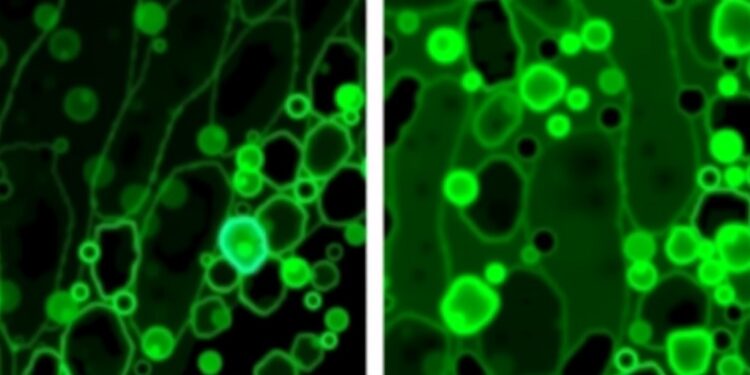Therapy-related B-lymphoblastic leukemia (B-ALL) is an extraordinarily uncommon outcome that may arise following treatment for multiple myeloma, a hematological malignancy primarily characterized by the abnormal proliferation of monoclonal plasma cells in the bone marrow. Though this phenomenon is recognized in medical literature, it currently lacks distinct classification by the World Health Organization, which adds a layer of complexity to diagnosis and treatment. The connection between therapeutic interventions for myeloma and the subsequent development of secondary leukemias has been explored through various publications, paving the way for recognizing the potential risks associated with certain treatments, particularly immunomodulatory agents like lenalidomide.
In the encounter detailed here, a 65-year-old male patient with a well-documented history of IgG kappa multiple myeloma and numerous treatment lines presented to the medical facility with alarming symptoms, including fever and evident cytopenia based on a complete blood count analysis. This set of clinical findings inevitably raised suspicion for a possible secondary malignancy, given the patient’s background. Bone marrow examination was promptly conducted, revealing a proliferation of blasts that were morphologically consistent with lymphoblasts. The significance of this discovery could not be overstated; it suggested a transformation of the patient’s hematological profile, warranting further diagnostic exploration.
Immunophenotypic characterization of these blasts was undertaken to elucidate their lineage and the specifics of the leukemic profile. The analysis revealed that the neoplastic blasts expressed the B-lymphoblast markers, establishing the categorization of B-ALL. Notably, an atypical surface light chain expression was observed, which is not commonly seen in B-ALL cases. This unique immunophenotype suggests a potential deviation from conventional B-ALL presentations and raises questions about the underlying biology of the disease in the context of prior myeloma treatment.
The investigation did not stop at immunophenotyping; extensive ancillary studies were performed to ensure the accuracy of the diagnosis. Clonality assessments demonstrated that the B-ALL was clonally unrelated to the previous myeloma, providing critical insights into the origin of the leukemia. This finding is particularly vital, as it suggests that the emergence of B-ALL was not a direct progression or transformation from the multiple myeloma but rather a new and independent clonal event, likely driven by the therapeutic landscape the patient had navigated.
Next-generation sequencing technologies played a pivotal role in further dissecting the genomic landscape of the secondary leukemia, unearthing pathogenic mutations in key genes such as KDM6A and KRAS. The implications of these mutations are profound; KDM6A is involved in chromatin remodeling and can influence gene expression, while KRAS mutations are well-recognized in oncogenesis and can dictate therapeutic responsiveness or resistance. The identification of such mutations underscores the complexity of therapy-related malignancies and raises considerations over tailored treatment approaches that may emerge from these findings.
The case discussed here is notable not just for its clinical revelations but also for its contribution to the growing body of knowledge surrounding therapy-related neoplasms. While the WHO has not yet formally categorized therapy-related B-ALL as a distinct entity, the accumulation of evidence, including this case, bolsters the argument for its recognition. Moreover, this case contributes crucial clinical foresight, alerting practitioners to the necessity of vigilance when managing former myeloma patients, particularly those who have received lenalidomide as part of their treatment regimen.
Recognizing new predominant clones in sequential bone marrow evaluations can serve as an early warning signal for the emergence of secondary B-cell malignancies. This awareness is critical for clinicians who must balance the management of myeloma with the potential risks of secondary complications like leukemias, particularly in patients presenting abnormalities in their hematological profiles following treatment. The challenge remains to effectively monitor and discern the evolving clonal dynamics in such patients.
The implications of this case extend beyond the individual patient’s experience. It serves as a touchstone for further discussions surrounding the safety and long-term outcomes of myeloma therapies and highlights the necessity for ongoing research into the mechanisms of secondary malignancies. The scientific community has a pivotal role in dissecting the risks associated with myeloma treatments, as awareness of such complications can influence clinical decisions and improve patient outcomes.
As more data emerges from cases like this, there is potential not just for refining treatment guidelines but also for individualized therapeutic strategies that account for genetic susceptibilities and prior treatment histories. The interconnectedness of cancer therapies and their unanticipated consequences underscores the importance of a multi-faceted approach to patient care that includes vigilant monitoring for secondary malignancies.
In conclusion, the case of therapy-related B-lymphoblastic leukemia following multiple myeloma treatment is a call to action for the medical community. It challenges the existing paradigms of cancer therapy and necessitates a deeper exploration into the multifactorial nature of treatment-related complications. Clinicians are urged to remain alert to the presentation of new hematological malignancies in patients with a history of myeloma and to act swiftly in their evaluation and management. As we evolve in our understanding of cancer therapies, the lessons learned from such cases must inform future practices, ensuring that patient safety remains at the forefront of oncological care.
Subject of Research: Therapy-related B-lymphoblastic leukemia following treatment for multiple myeloma.
Article Title: Therapy-related B-lymphoblastic Leukemia Following Treatment for Multiple Myeloma with Unusual Surface Light Chain Expression: A Case Report.
News Publication Date: 11-Mar-2025.
Web References: Journal of Clinical and Translational Pathology.
References: None provided.
Image Credits: None provided.
Keywords: Multiple myeloma, Leukemia, B-lymphoblastic leukemia, Clonal evolution, Genomic profiling, Secondary malignancies.




